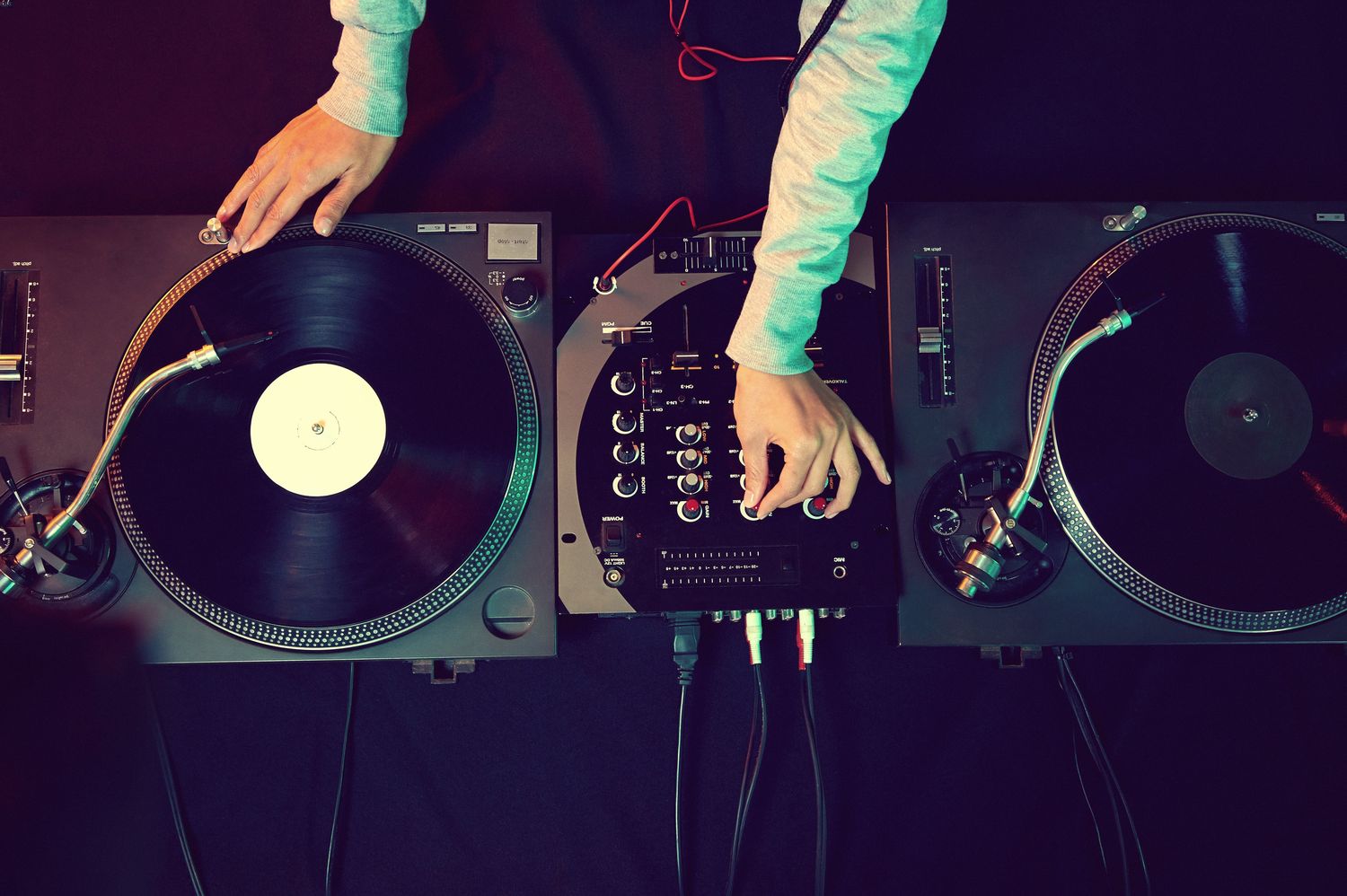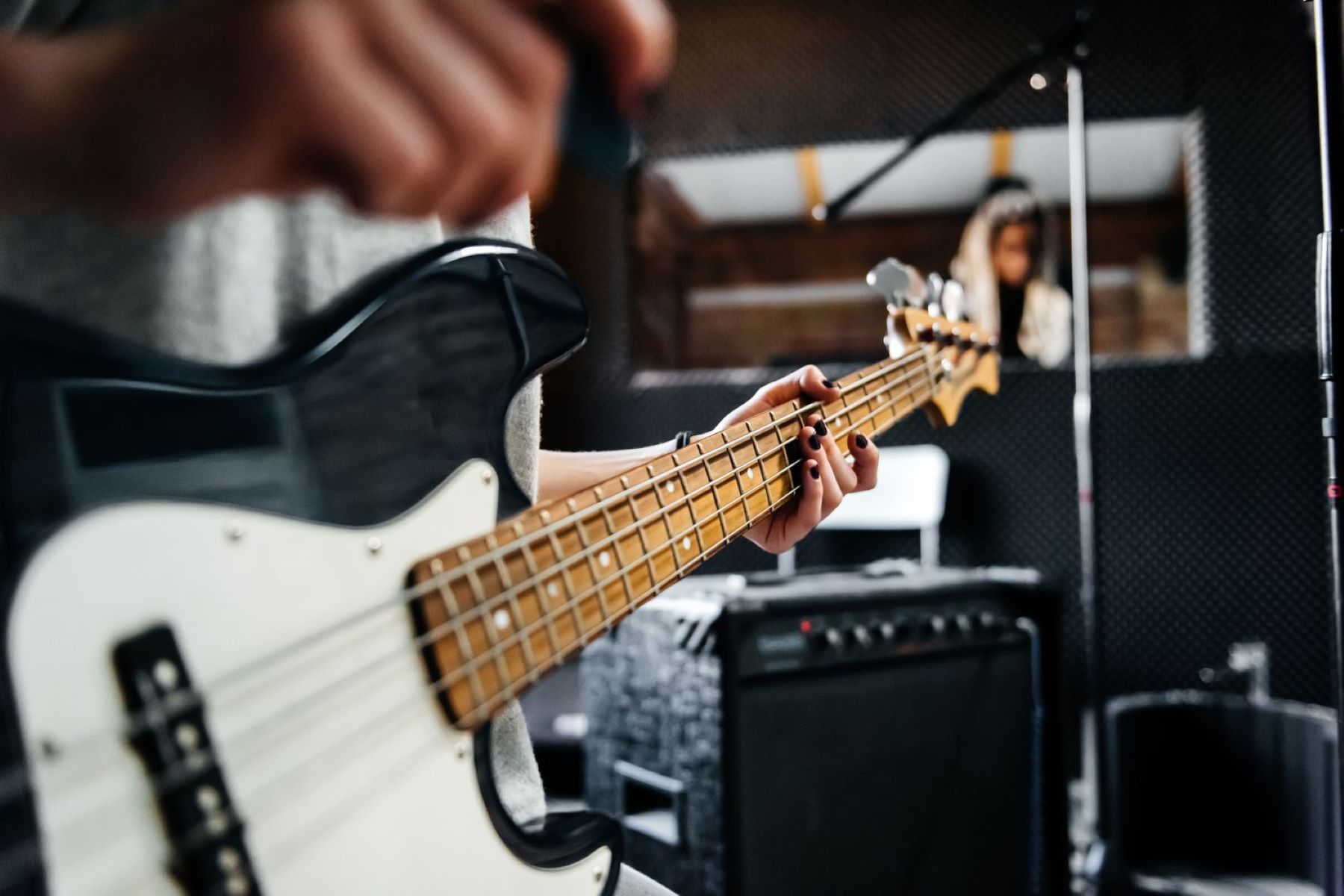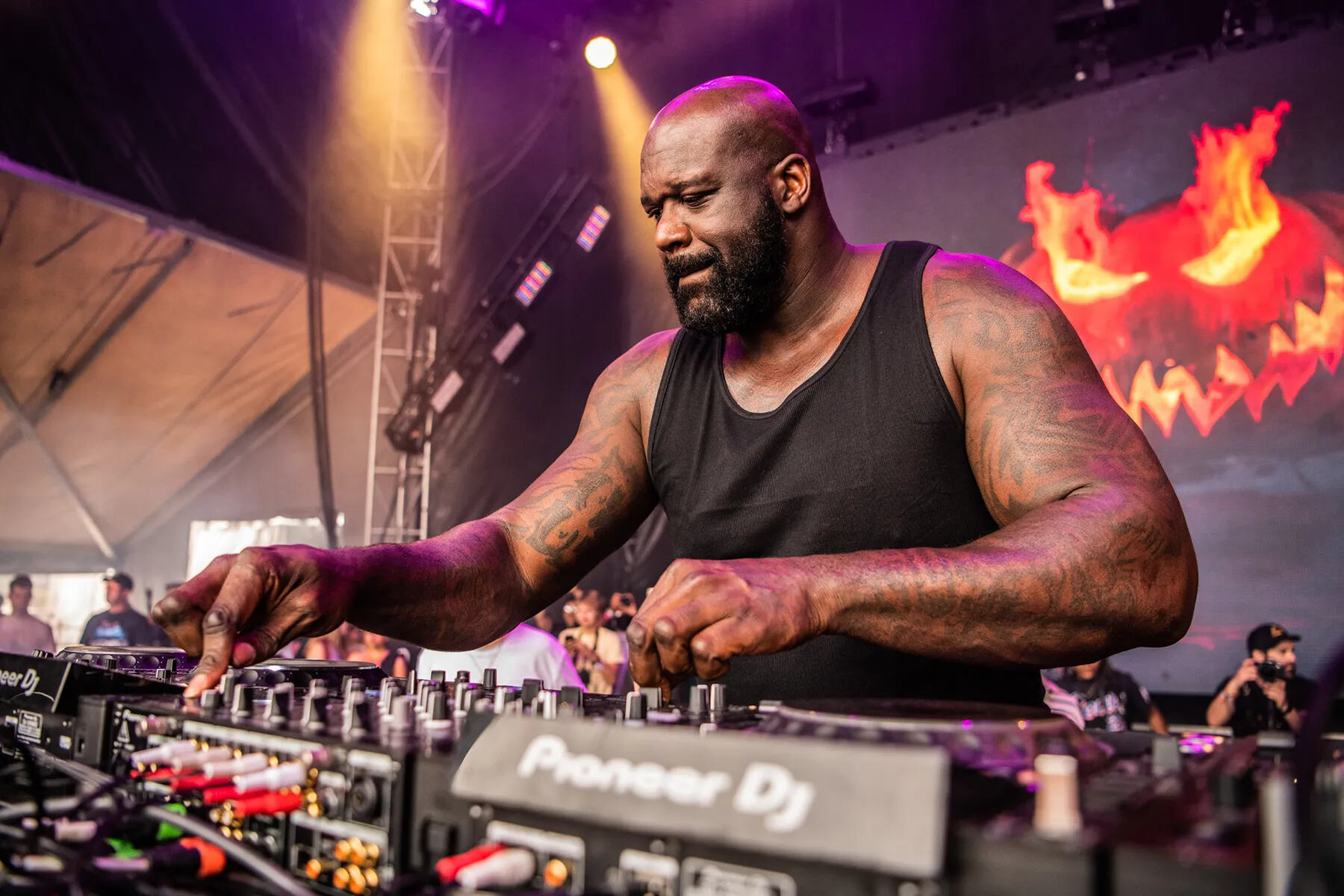Home>Production & Technology>DJ>What Does A DJ Mixer Do


DJ
What Does A DJ Mixer Do
Published: March 4, 2024
Discover the essential role of a DJ mixer and how it enhances the art of DJing. Learn about its functions and importance in creating seamless transitions and dynamic mixes. Gain insights into the versatile tool used by DJs to elevate their performances.
(Many of the links in this article redirect to a specific reviewed product. Your purchase of these products through affiliate links helps to generate commission for AudioLover.com, at no extra cost. Learn more)
Table of Contents
Introduction
As the heartbeat of any electrifying party or club night, a DJ's ability to seamlessly blend tracks and create an immersive sonic experience is nothing short of magical. At the core of this wizardry lies a fundamental tool: the DJ mixer. This unassuming yet powerful device serves as the nerve center for manipulating and blending audio signals, enabling DJs to craft seamless transitions and captivating mixes that keep the dance floor pulsating.
The DJ mixer, often adorned with an array of knobs, sliders, and buttons, is the control hub where sonic alchemy takes place. It's the conduit through which a DJ harnesses the power of music, shaping and sculpting sound waves to create a symphony of beats and melodies that captivate audiences.
While the concept of mixing and manipulating music dates back to the early days of radio broadcasting, the modern DJ mixer has evolved into a sophisticated instrument that empowers DJs to push the boundaries of creativity and sonic expression. With its roots in the art of turntablism and the vibrant culture of dance music, the DJ mixer has become an iconic symbol of artistic innovation and sonic exploration.
In this article, we'll delve into the inner workings of a DJ mixer, exploring its basic functions and the pivotal role it plays in shaping the sonic landscape of contemporary music culture. From crossfading and equalization to effects and cueing, we'll unravel the mysteries of this essential tool, shedding light on the art and science of DJing. So, buckle up and get ready to embark on a journey through the sonic realms where music and technology converge in perfect harmony.
Basic Functions of a DJ Mixer
At its core, a DJ mixer serves as the central command center for manipulating and blending audio signals. It acts as the nexus where multiple audio sources, such as turntables, CDJs, or media players, converge to be molded into a cohesive sonic tapestry. Let's explore the fundamental functions that define the essence of a DJ mixer:
1. Channel Mixing and Level Control
The DJ mixer features multiple channels, each accommodating a distinct audio input source. These channels can be individually adjusted to control the volume, equalization, and other audio parameters of each input. By manipulating the faders and knobs associated with each channel, a DJ can seamlessly blend and transition between different tracks, creating a fluid sonic journey that captivates the audience.
2. Crossfading and Blending Tracks
One of the hallmark features of a DJ mixer is its ability to facilitate smooth transitions between tracks through crossfading. By manipulating the crossfader, a DJ can seamlessly blend the audio output of two different channels, allowing for a seamless transition from one track to another. This technique is essential for maintaining the energy of the dance floor and ensuring a continuous flow of music without abrupt interruptions.
3. Cueing and Monitoring
A DJ mixer enables precise cueing and monitoring of audio sources, allowing the DJ to preview and prepare upcoming tracks before integrating them into the mix. Through the use of headphones and cue buttons, a DJ can isolate and monitor individual channels, ensuring that the timing and synchronization of tracks are flawlessly executed.
4. Equalization and Sound Sculpting
Equipped with dedicated EQ (equalization) controls for each channel, a DJ mixer empowers the DJ to sculpt the tonal characteristics of the audio signals. By adjusting the bass, midrange, and treble frequencies, a DJ can tailor the sonic profile of each track, ensuring optimal balance and cohesion within the mix.
5. Effects and Processing
Many modern DJ mixers are equipped with built-in effects and processing capabilities, allowing DJs to infuse their mixes with creative sonic embellishments. From reverbs and delays to filters and modulation effects, these tools enable DJs to add depth and texture to their mixes, elevating the sonic experience to new heights.
In essence, a DJ mixer serves as the canvas upon which a DJ paints a sonic masterpiece, blending, shaping, and sculpting audio signals to create an immersive and captivating musical journey. It is the ultimate tool of sonic manipulation, empowering DJs to unleash their creativity and craft unforgettable experiences through the power of music.
Crossfading and Mixing Tracks
One of the most defining and captivating aspects of DJing is the art of seamlessly blending and transitioning between tracks, a feat made possible through the ingenious technique of crossfading. At the heart of this technique lies the crossfader, a pivotal control element on a DJ mixer that allows for the smooth and fluid merging of two distinct audio sources. This fundamental skill is a hallmark of a skilled DJ, enabling them to sustain the energy of the dance floor and orchestrate a continuous sonic journey that captivates the audience.
Crossfading, as the name suggests, involves fading out the audio from one track while simultaneously fading in the audio from another, creating a seamless transition between the two. The crossfader, typically positioned in the center of the mixer's control surface, serves as the bridge between the two audio channels, allowing the DJ to dynamically adjust the balance between the incoming and outgoing tracks. By manipulating the position of the crossfader, a DJ can modulate the intensity of the transition, seamlessly blending the sonic textures of two distinct tracks.
The art of crossfading extends beyond mere technical manipulation; it embodies a profound understanding of musical dynamics and the ability to craft a cohesive narrative through sound. A skilled DJ leverages crossfading as a storytelling device, using it to build tension, create anticipation, and deliver moments of euphoric release on the dance floor. The seamless transition from one track to another becomes a catalyst for emotional resonance, drawing the audience into a sonic journey that transcends individual songs and genres.
In addition to crossfading, the process of mixing tracks involves meticulous attention to detail, timing, and harmonic compatibility. A DJ must possess a keen ear for identifying musical elements that harmoniously complement each other, ensuring that the transition between tracks is not only seamless but also musically coherent. This artful approach to mixing tracks elevates the DJ's performance from a mere sequence of songs to a symphonic exploration of sonic possibilities.
Ultimately, mastering the art of crossfading and mixing tracks is a testament to a DJ's ability to manipulate time and space through music, creating a seamless continuum of sound that transcends individual tracks and genres. It is the essence of sonic storytelling, where the boundaries between songs blur, and a new narrative unfolds with each meticulously crafted transition. In the hands of a skilled DJ, the art of crossfading and mixing tracks becomes a transcendent experience, weaving together a tapestry of sound that resonates deeply with the audience.
Equalization and Sound Control
At the heart of a DJ's sonic manipulation prowess lies the art of equalization and sound control, facilitated by the dedicated EQ (equalization) controls on a DJ mixer. These controls empower the DJ to sculpt and shape the tonal characteristics of individual audio sources, ensuring optimal balance and cohesion within the mix.
The EQ controls on a DJ mixer typically include knobs or sliders for adjusting the bass, midrange, and treble frequencies of each channel. This granular level of control allows the DJ to finely tailor the sonic profile of each track, enhancing its clarity, impact, and overall presence within the mix. By attenuating or boosting specific frequency bands, the DJ can effectively emphasize or attenuate certain sonic elements, imparting a sense of depth and dimension to the music.
When it comes to sound control, the EQ controls play a pivotal role in addressing sonic imbalances and optimizing the overall sonic landscape. For instance, in a scenario where a track exhibits excessive bass frequencies that overpower the midrange and treble, the DJ can judiciously attenuate the bass frequencies while boosting the midrange and treble, thereby restoring balance and ensuring that each sonic component occupies its rightful space within the mix.
Furthermore, the art of equalization extends beyond mere technical adjustments; it embodies a creative expression of sonic artistry. A skilled DJ leverages EQ controls to imbue each track with a distinct sonic fingerprint, accentuating its unique sonic qualities and ensuring that it resonates with maximum impact. Whether it's enhancing the warmth of a melodic bassline, accentuating the shimmering highs of a vocal hook, or sculpting the punch and clarity of a rhythmic groove, the EQ controls serve as the palette through which the DJ paints a vivid sonic canvas.
In the context of a live performance, the ability to dynamically adjust the EQ settings in real-time enables the DJ to respond to the energy and vibe of the audience, tailoring the sonic experience to suit the evolving mood of the dance floor. This intuitive approach to sound control elevates the DJ's performance from a mere playback of tracks to a dynamic act of sonic curation, where each adjustment serves as a brushstroke in the sonic tapestry being woven in real-time.
Ultimately, the mastery of equalization and sound control is a testament to a DJ's ability to shape and mold sound waves with precision and artistry, creating a sonic landscape that captivates and resonates with the audience. It is the delicate dance between technical finesse and creative expression, where the sonic alchemy of equalization transforms music into a living, breathing entity that transcends mere auditory sensation.
Effects and Filters
In the realm of DJing, the integration of effects and filters represents a transformative sonic frontier, allowing DJs to infuse their mixes with a kaleidoscope of creative embellishments and sonic textures. From ethereal reverbs and pulsating delays to hypnotic filters and dynamic modulation effects, the palette of sonic possibilities offered by effects and filters is virtually limitless, serving as a gateway to boundless sonic exploration.
Effects, in the context of a DJ mixer, encompass a diverse array of audio processing tools that enable DJs to manipulate and enhance the sonic characteristics of individual tracks or the overall mix. These tools can range from time-based effects such as echoes and reverbs to modulation effects like flangers and phasers, each imbuing the music with a distinct sonic identity. By integrating effects into their mixes, DJs can transcend the boundaries of conventional sound, creating immersive sonic landscapes that captivate the audience and elevate the overall listening experience.
Filters, on the other hand, provide a means of sculpting the tonal dynamics of audio signals, allowing DJs to selectively attenuate or emphasize specific frequency ranges. Equipped with high-pass, low-pass, and band-pass filters, a DJ mixer empowers DJs to shape the sonic character of individual tracks, adding a layer of dynamic expressiveness to the music. Whether it's creating dramatic build-ups by gradually opening a low-pass filter or infusing a track with rhythmic pulsations using a resonant filter, the creative potential of filters is boundless.
The integration of effects and filters into a DJ mix represents a convergence of technical finesse and artistic expression, where the boundaries between sound manipulation and sonic storytelling blur. A skilled DJ leverages effects and filters as tools of sonic alchemy, using them to evoke emotions, build tension, and deliver moments of sonic transcendence. Each effect and filter becomes a brushstroke in the sonic canvas, adding depth, texture, and dimension to the musical journey unfolding before the audience.
In a live performance setting, the judicious use of effects and filters enables DJs to dynamically shape the sonic narrative, responding to the energy and vibe of the dance floor in real-time. This intuitive manipulation of effects and filters transforms the DJ's performance into a dynamic act of sonic sculpting, where each effect and filter adjustment becomes a pivotal moment in the sonic evolution of the mix.
Ultimately, the integration of effects and filters represents a testament to a DJ's ability to push the boundaries of sonic creativity, transforming music into a multi-dimensional experience that transcends the confines of traditional genres and styles. It is the art of sonic innovation, where the marriage of effects and filters becomes a catalyst for sonic exploration, inviting the audience on a mesmerizing journey through the boundless realms of sound.
Cueing and Monitoring
Cueing and monitoring constitute the backbone of a DJ's ability to orchestrate seamless transitions and precisely synchronize the integration of tracks within a mix. These essential functions are facilitated by the dedicated cueing and monitoring features inherent in a DJ mixer, providing the DJ with the necessary tools to preview, prepare, and seamlessly integrate audio sources into the sonic tapestry.
Precision Cueing
The process of cueing involves the precise selection and previewing of audio sources before they are introduced into the live mix. This is achieved through the use of headphones and cue buttons, allowing the DJ to isolate and monitor individual channels without affecting the main output. By listening to a specific channel through headphones, the DJ can meticulously assess the timing, phrasing, and harmonic compatibility of the upcoming track, ensuring a seamless transition into the mix.
Seamless Transitions
The ability to cue and monitor audio sources with precision empowers the DJ to craft seamless transitions that maintain the energy and flow of the mix. By queuing up the next track, adjusting its tempo, and fine-tuning its starting point, the DJ can seamlessly integrate it into the live mix at the opportune moment, creating a fluid and cohesive sonic journey for the audience.
Synchronization and Timing
In addition to facilitating smooth transitions, cueing and monitoring play a crucial role in ensuring the synchronization and timing of tracks within the mix. By previewing upcoming tracks and aligning their beats and musical elements, the DJ can orchestrate flawless transitions that resonate with impeccable timing, captivating the audience and sustaining the momentum of the dance floor.
Real-Time Adaptation
The ability to cue and monitor audio sources in real-time enables the DJ to adapt and respond to the evolving energy and vibe of the audience. This intuitive process of previewing, preparing, and seamlessly integrating tracks empowers the DJ to tailor the sonic experience to suit the mood and atmosphere of the dance floor, fostering a dynamic and interactive connection with the audience.
In essence, cueing and monitoring represent the pillars of precision and artistry in DJing, allowing the DJ to meticulously curate and weave together a seamless sonic narrative that captivates and resonates with the audience. It is the mastery of these fundamental functions that elevates a DJ's performance from mere track selection to a dynamic act of sonic storytelling, where each transition becomes a moment of anticipation, excitement, and euphoric release on the dance floor.
Conclusion
In the realm of DJing, the mixer stands as an indispensable tool, serving as the conduit through which sonic magic is woven. From the fundamental functions of channel mixing and crossfading to the artful manipulation of equalization, effects, and filters, the DJ mixer empowers artists to craft immersive sonic experiences that transcend the boundaries of conventional music. The seamless integration of cueing and monitoring further elevates the art of DJing, enabling precise synchronization and dynamic adaptation in real-time.
At its essence, the DJ mixer embodies the intersection of technology and artistry, where the manipulation of audio signals becomes a canvas for sonic innovation and storytelling. It is the mastery of these essential functions that distinguishes a skilled DJ, transforming a mere sequence of tracks into a symphonic journey that resonates deeply with the audience.
As the pulsating heart of the dance floor, the DJ mixer serves as a gateway to boundless sonic exploration, inviting both artists and audiences to embark on a transformative sonic odyssey. It is a testament to the power of music and technology converging in perfect harmony, creating an immersive experience that transcends mere auditory sensation.
In the hands of a skilled DJ, the mixer becomes a vehicle for artistic expression, a conduit for emotional resonance, and a catalyst for collective euphoria. It is the nexus where creativity and technology intertwine, giving rise to a sonic tapestry that captivates, inspires, and unites.
In conclusion, the DJ mixer is not merely a tool; it is a symbol of artistic innovation and sonic exploration. It embodies the spirit of creativity and the power of music to transcend boundaries, inviting audiences to lose themselves in the transformative magic of sound. As the beat goes on, the DJ mixer remains an enduring emblem of sonic alchemy, where the art of DJing continues to push the boundaries of creativity and captivate the hearts and souls of music enthusiasts worldwide.











